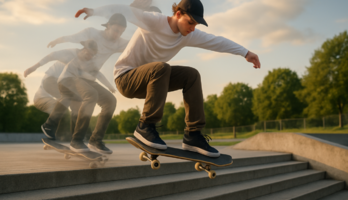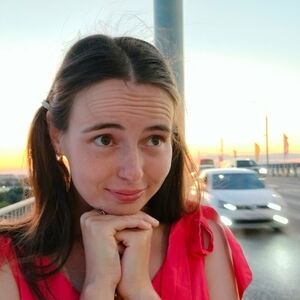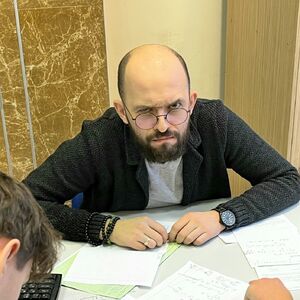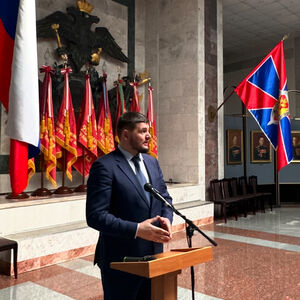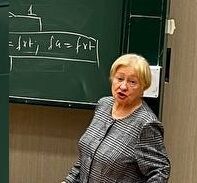Диссертация (1103743), страница 18
Текст из файла (страница 18)
Metal clad leaky waveguides for chemical and biosensing applications.Biosens Bioelectron, 20(9):1718–27, Mar 15 2005.[63] M. Zourob, S. Mohr, B. J. T. Brown, P. R. Fielden, M. B. McDonnell, and N. J. Goddard. Anintegrated metal clad leaky waveguide sensor for detection of bacteria. Analytical Chemistry,77(1):232–242, 2005.[64] N. Skivesen, R. Horvath, S.
Thinggaard, N.B. Larsen, and H.C. Pedersen. Deep-probe metalclad waveguide biosensors. Biosens. Bioelectron, (22):1282, 2007.[65] E. Udd. An overview of fibre-optic sensors. Rev Sci Instrum, 66(8):4015, 1995.[66] C.B. Ojeda M.E. Bosch, A.J.R. Sanchez. Recent development in optical fiber biosensors.Sensors, 7:797, 2007.104[67] A.
D. Kersey, M. A. Davis, H. J. Patrick, M. LeBlanc, Koo, C. G. Askins, M. A. Putnam,and E. J. Friebele. Fiber grating sensors. J. Lightwave Technol., (15):1442–1463, 1997.[68] K. O. Hill, Y. Fujii, D. C. Johnson, and B. S. Kawasaki. Photosensitivity in optical fiberwaveguides: Application to reflection filter fabrication. Appl. Phys. Lett., (32):647, 1978.[69] H.J.
Sorin, W.V.; Shaw.A single-mode fiber evanescent grating reflector.LightwaveTechnology, Journal of, 3(5):1041,1043, October 1985.[70] K. Schroeder, W. Ecke, R. Mueller, R. Willsch, and A. Andreev. A fibre bragg gratingrefractometer. Meas. Sci. Technol., (12):757, 2001.[71] K. H. Smith, B. L.
Ipson, T. L. Lowder, A. R. Hawkins, R. H. Selfridge, and S. M. Schultz.Surface-relief fiber bragg gratings for sensing applications. Appl. Opt., (45):1669–1675, 2006.[72] T. L. Lowder, J. D. Gordon, S. M. Schultz, and R. H. Selfridge. Volatile organic compoundsensing using asurface-relief d-shaped fiber bragg grating and a polydimethylsiloxane layer.Opt.
Lett., 32(17):2523–2525, 2007.[73] Byeong Ha Lee, Yu Liu, Sang Bae Lee, Sang Sam Choi, and Joo Nyung Jang. Displacementsof the resonant peaks of a long-period fiber grating induced by a change of ambient refractiveindex. Optics Letters, 22(23):1769–1771, 1997.[74] A. Hale M. Sumetsky, Y. Dulashko. Fabrication and study of bent and coiled free silicananowires: Self-coupling microloop optical interferometer. Opt. Express, (12):3521–3531, 2004.[75] Fei Xu, Valerio Pruneri, Vittoria Finazzi, and Gilberto Brambilla. An embedded opticalnanowire loop resonator refractometric sensor.
Opt. Express, (16):1062–1067, 2008.[76] Z. Ye J. Lou, L. Tong. Modeling of silica nanowires for optical sensing. Opt. Express,13(6):2135–2140, 2005.[77] J. Pedersen, Xiao S., and Mortensen N. Slow-light enhanced absorption for bio-chemicalsensing applications: potential of low-contrast lossy materials. Journal Of The European OpticalSociety, (Rapid Publications, 3), 2008.[78] Lars Rindorf and Ole Bang. Highly sensitive refractometer with a photonic-crystal-fiber longperiod grating.
Opt. Lett., (33):563–565, 2008.[79] Lars Rindorf, Jesper B. Jensen, Martin Dufva, Lars Hagsholm Pedersen, Poul Erik Høiby, andOle Bang. Photonic crystal fiber long-period gratings for biochemical sensing. Opt. Express,(14):8224–8231, 2006.105[80] J. Sabarinathan1 J. Topol’ančik1, P.
Bhattacharya1 and P.-C. Yu. Fluid detection withphotonic crystal-based multichannel waveguides. Appl. Phys. Lett., (82):1143, 2003.[81] Loncar M., Scherer A., and Qiu Y. Photonic crystal laser sources for chemical detection.Applied Physics Letters, 82(26):4648–4650, 2003.[82] E. Chow, A. Grot, L. W. Mirkarimi, M. Sigalas, and G.
Girolami. Ultracompact biochemicalsensor built with two-dimensional photonic crystal microcavity. Opt. Lett., (29):1093–1095,2004.[83] Mindy R. Lee and Philippe M. Fauchet. Two-dimensional silicon photonic crystal basedbiosensing platform for protein detection. Opt. Express, (15):4530–4535, 2007.[84] Mindy R.
Lee and Philippe M. Fauchet. Nanoscale microcavity sensor for single particledetection. Opt. Lett., (32):3284–3286, 2007.[85] M. Askari, S. Yegnanarayanan, and A. Adibi. Photonic crystal waveguide based sensors. Proc.SPIE, page 7946, 2011.[86] P. Li, B. Lin, J. Gerstenmaier, and B.T. Cunningham. A new method for label-free imagingof biomolecular interactions. Sensors and Actuators B, 99:6–13, 2004.[87] Lin B, Qiu J, Gerstenmeier J, Li P, Pien H, Pepper J, and Cunningham B. A label-free opticaltechnique for detecting small molecule interactions. Biosens Bioelectron, 17:827–34, Sep 2002.[88] B.T. Cunningham N. Ganesh, I.D.
Block.Near ultraviolet-wavelength photonic-crystalbiosensor with enhanced surface-to-bulk sensitivity ratio. Appl. Phys. Lett., 89(023901), 2006.[89] Sudeep Mandal and David Erickson. Nanoscale optofluidic sensor arrays. Opt. Express,(16):1623–1631, 2008.[90] E.V. Alieva V.N. Konopsky. Photonic crystal surface waves for optical biosensors. Anal.Chem., (79):4729, 2007.[91] H. Hanchen F. Goos. Ein neuer und fundamentaler versuh zur totalferlexion.
Ann. Physic, 6Folge, Band 1, 1947.[92] M. Brenci, R. Calzolai, F. Cosi, G. Nunzi Conti, S. Pelli, and G. C. Righini. Microsphericalresonators for biophotonic sensors. Proc. SPIE, page 6158, 2006.[93] F. Vollmer, S. Arnold, D. Braun, I. Teraoka, and A.
Libchaber. Multiplexed dna quantificationby spectroscopic shift of two microspherecavities. Biophys. J., (85):1974–1979, 2003.106[94] Robert W. Boyd and John E. Heebner. Sensitive disk resonator photonic biosensor. AppliedOptics, 40(31):5742–5747, 2001.[95] L. He, Y. F. Xiao, C. Dong, J. Zhu, V. Gaddam, and L. Yang. Compensation of thermalrefraction effect in high-q toroidal microresonator by polydimethylsiloxane coating.
Appl. Phys.Lett., 93(201102), 2008.[96] X. Fan, I. M. White, S. I. Shopova, H. Zhu, J. D. Suter, and Y. Sun. Sensitive opticalbiosensors for unlabeled targets: A review. Anal.Chim., page 8–26, 2008.[97] F. Vollmer, D. Braun, A. Libchaber, M. Khoshsima, I. Teraoka, and S. Arnold. Proteindetection by optical shift of a resonant microcavity. Appl. Phys. Lett., 80(21):4057–4059, 2002.[98] F. Vollmer. Taking detection to the limit: Monitoring single molecule interactions on a labelfree microcavity biosensor.
Proc. Spie, Oct 2014.[99] K. Vahala A. Armani. Heavy water detection using ultra-high-q microcavities. OPTICSLETTERS, 31(12), June 15 2006.[100] F. Vollmer, S. Arnold, D. Braun, I. Teraoka, and A. L. Multiplexed. Dna quantification byspectroscopic shift of two microsphere cavities. Biophysical Journal, 85:1974–1979, September2003.[101] A. Rosenberger D.
Ganta, E. Dale. Measuring sub-nm adsorbed water layer thickness anddesorption rate sing a fused-silica whispering-gallery microresonator. Meas. Sci. Technol.,25(055206), 2014.[102] G. Hwang, L. Pang, E. Mullen, and Y. Fainman. Plasmonic sensing of biological analytesthrough nanoholes. Ieee Sensors Journal, 8:2047–2079, 2008.[103] Swann M. J., Peel L. L., Carrington S., and Freeman N. J. Dual-polarization interferometry:an analytical technique to measure changes in protein structure in real time, to determinethe stoichiometry of binding events, and to differentiate between specific and nonspecificinteractions. Anal Biochem., 329(2):190–8, Jun 15 2004.[104] E.
Krioukov, D. J. W. Klunder, A. Driessen, J. Greve, and C. Otto. Integrated opticalmicrocavities for enhanced evanescent-wave spectroscopy. Optics Letters, 27(17):1504–1506,2002.[105] C. Otto E. Krioukov, J. Greve. Performance of integrated optical microcavities for refractiveindex and fluorescence sensing. Sens. Actuators B, (90):58–67, 2003.107[106] Evgueni Krioukova, Dion Klunderb, Alfred Driessenb, Jan Grevea, and Cees Otto.
Twophoton fluorescence excitation using an integrated optical microcavity: a promising tool forbiosensing of natural chromophores. Talanta, 65(5):1086–1090, 15 March 2005.[107] R.W. Boyd, J.E. Heebner, N.N. Lepeshkin, Q.H. Park, A. Schweinsberg, G.W. Wicks,A.S. Baca, J.E. Fajardo, R.R. Hancock, M.A. Lewis, R.M. Boysel, M. Quesada, R. Welty,A.R. Bleier, J. Treichler, R.E. Slusher, J. Mod. R.W. Boyd, J.E. Heebner, N.N. Lepeshkin,Q.H. Park, A. Schweinsberg, G.W. Wicks, A.S. Baca, J.E. Fajardo, R.R.
Hancock, M.A.Lewis, R.M. Boysel, M. Quesada, R. Welty andA.R. Bleier, J. Treichler, R.E. Slusher, andJ. Mod. Nanofabrication of optical structures and devices forphotonics and biophotonics.Opt., (50):2543, 2003.[108] A. Schweinsberg, S. Hocde, N.N. Lepeshkin, R.W. Boyd, C. Chase, and J.E. Fajardo.
